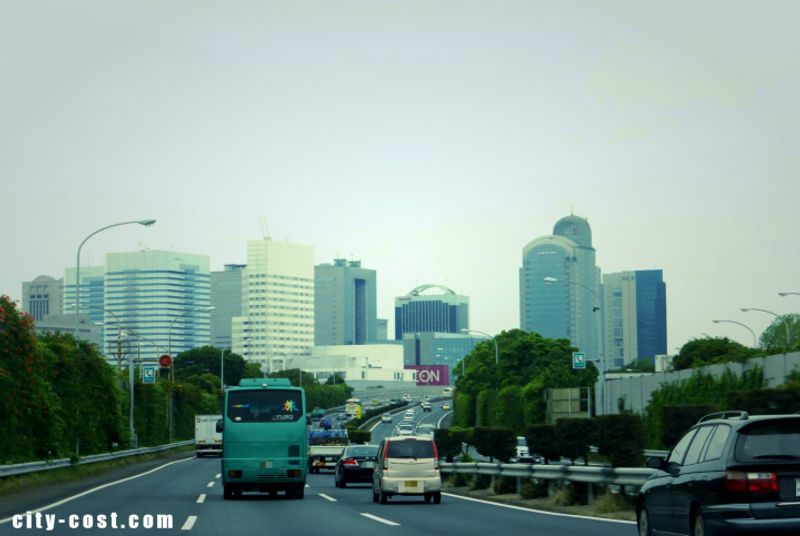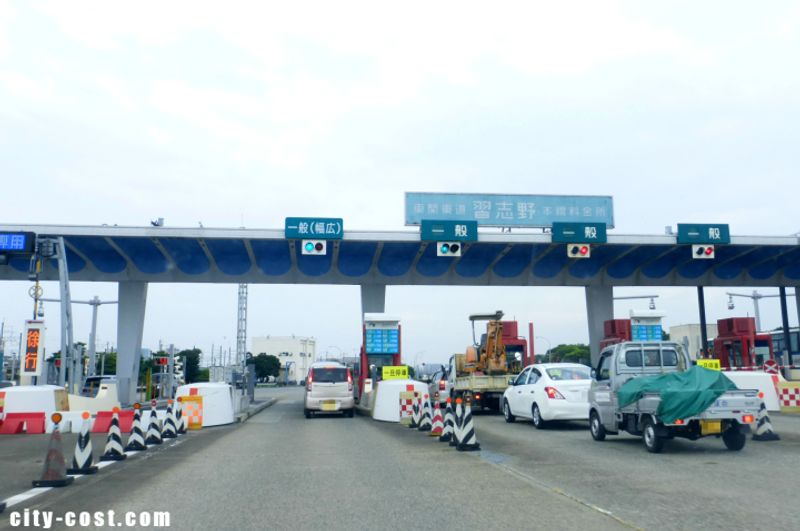Aug 17, 2015
Japan’s Expressway Driving Experience

In an earlier article here at City-Cost, we took you through the process of getting a driver’s license in Japan. Perhaps we’re jumping the gun a bit, but in this article we want to look at Japan’s expressway/highway/motorway driving experience.
Most of the nation’s expressways are managed by the Nippon Expressway Company (NEXCO), which is itself split into regional groups, East, West, and Central. Their websites are a good English-language resource for the formalities of expressway driving. You can read about the rules, methods of payment, and services.
What we want to do here, is fill in some of the blanks by talking about the actual experience of driving on Japan’s expressways.
First all let’s be clear, the nation’s expressways are in good nick, and most users seem to want to stay alive! In fact, one should expect these roads to be in good condition as none of them are free, and none of them are cheap! Nor will you find any of the six-lane (both ways) monsters that might be found in other countries (presumably because of a lack of space, rather than a lack of cars).
Users (and their motor’s) come in all shapes and sizes, from emasculated speed racers, through to baby-on-board crawlers.

What To Expect
Speed Limits
Usually either 80 kph or 100 kph. Group mentality prevails in Japan, at work, school, in social circles, and on expressways. With the latter, the group dictates that few people stick to the limits. Don’t be alarmed when you find the general flow doing a good 10 kph over the limit. There are plenty of speed cameras around (easy to spot) but in this driver’s experience, few people slow down for them. Whilst we strongly advise sticking to speed limits (they are the law, after all), asking around, it seems that 10-20 kph over is something of a ‘safe zone’, in terms of not getting pulled over. That said, there are often rumours of clampdowns by the authorities. Be aware of ‘plain-clothes/vehicle’ patrols on popular routes. On some inner city expressways, where the limit might be as low as 60 kph, it can be very difficult to maintain this speed due to pressure from behind. Stick to the inside lane.
Toll Gates
Entrances to expressways come in two forms; pay on entrance or take a ticket and pay on exit. As such, there are two ways to incur the wrath of the people behind you. One: driving past the automatic ticket dispenser such that you have to reverse back or pull up and get out to collect the ticket that you missed. Two: faffing around, looking for the money that you should have made ready and easy to reach before you set out. You’ve been warned.
All of these concerns can be done away with by investing in an Electronic Toll Collection (ETC) box and card. This way there’s no need for ticket collection or fiddly cash transactions. Read more, here.
ETC users go through the purple gates, everyone else, green. On the approach, ETC lanes will be indicated.

Confusing Signage
For the most part, signage is clear. Images and arrows make sense, and everything is translated into English. Where there can be confusion is when it comes to possible lane closures! Sections of highway might be lined with large red arrows that look to suggest you need to switch lanes pretty soon, but sometimes this doesn’t materialize. Instead, all they seem to indicate is a faint curve or a slight widening of the central reservation. When there really is construction, yellow highway patrol vehicles are put into action with a massive arrow on their rear indicating the merging of lanes. The problem is, the arrow stays on display even when the vehicle is ‘off duty’ and driving back to base. Nothing to be done other than stay vigilant and expect either outcome.
Where there is a lack of English is those signs that display traffic jams ahead. If this is of concern, pull into a service area where you can take more time to figure out which routes are affected.
Junctions and Interchanges
Interchanges (signage, IC) are expressway entrances/exits. Junctions (signage, JCT) are where they merge/separate.
For Japan expressway novices and/or nervous drivers, these can be a technicolor nightmare. Picture the kind of urban scene a child would make with Lego; the planning is anathema. In urban areas particularly, space is as clenched as a nervous driver’s, well, you know what. Decisions need to made quickly, and in all the confusion, it can be hard to figure out which lane you need to be in.
They key here is confidence, which first-timers probably don’t have, so you’ll just have to pretend. Luckily, in this driver’s experience, there’s usually a forgiving road user that will see your hesitation and let you in. Ideally, have someone else with you to dissipate the urge to panic and also help look for gaps.
Holidays
TV news crews can barely contain their excitement when it comes to getting footage of Biblical lines of traffic looking to flee/return to the cities on national holidays. If possible, you’d be advised to give your expressway road trip a miss on these days (particularly the first and the last).
If you must head out on a holiday, be aware that these are the times of year when those people who don’t usually drive, drive! Be ready for anything, especially old-timers who confuse highway entrances as exits, and vice versa. Really! Luckily, most potential dangers will unfold in slow motion, as dictated by the massive amounts of traffic.
Service Areas
Familiar stuff really; toilets, cafeterias, smoking areas, sleeping trucks, kids running out from behind cars, biker gangs (hobbyists), … exhausted dads. In this writer’s experience, you’re never far from a chance to take a break.
Japan has something of a fetish for these areas. It’s not unusual to see programming on your TV in which a couple of beaming celebs take a road trip to check out some of the country’s more unique offerings.
Travel website tabico has published a list of 道の駅人気ランキング/Road Station Popularity Ranking.
For your reference, the top five (at the time of writing) …
1. Higashiura Terminal Park (linking Osaka and Shikoku)
2. Kawaba Denen Plaza (Gunma)
3. Azu No Sato Ichihara (Kisarazu, Chiba)
4. Tatsuta Fureai No Sato (Aichi, outside of Nagoya)
5. Ota (Gunma)
Expect rankings to differ depending on the source.
A Final Word
As always, we try to treat things with a little irreverence here at City-Cost, but hopefully we’ve given potential Japan expressway users an idea of what to expect. We’d be remiss though, if we didn’t stress how important it is to drive safely. Avoid trouble at all costs (it’ll be easy to place the blame on a clueless foreigner), make sure you’re insured, and take your road rage out on something else once you’re out of the car. A pillow, perhaps!
Let’s help each other out by sharing our experiences below. Or see us on Twitter: @City_Cost.



0 Comments